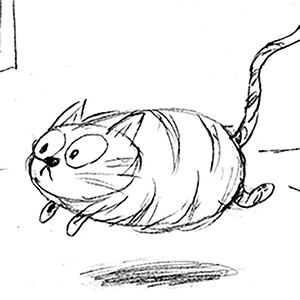T-shirt Printing Techniques: Mastering the Art of Custom Apparel
Published in Business Articles
You’re at a bustling local market or scrolling through an online store, surrounded by rows of vibrant custom t-shirts. Each shirt showcases a unique design, from sleek graphics to whimsical patterns or complex designs. Yet, behind these eye-catching displays, creators often grapple with issues like fading colors, setup costs, peeling designs, and blurry prints. These common challenges can frustrate both garment printing businesses and individual designers alike, leading to wasted resources and dissatisfied customers.
This guide offers you a deep dive into the art of t-shirt printing, equipped with techniques to ensure your designs not only look spectacular but also stand the test of time. By mastering various t-shirt printing methods, you’ll learn to produce high-quality, durable custom apparel that truly reflects your vision.
Fabric and Ink CompatibilityChoosing the right fabric and ink combination is crucial for high-quality prints. Different materials react uniquely with various inks, impacting the final appearance and longevity of your design. For instance, cotton, a natural fabric, absorbs ink well, making it ideal for vibrant and lasting prints. On the other hand, synthetic fabrics like polyester require specific inks and printing techniques to prevent designs from fading or distorting.
It's essential to match the ink type to your fabric type. Water-based inks are perfect for natural fibers, offering a soft feel and durable prints. Conversely, plastisol inks work best with synthetic materials, providing bright colors and high durability. Understanding these pairings will help you achieve the desired outcomes for your custom t-shirts.
Screen PrintingScreen printing stands out as a go-to method for large-scale production of t-shirts and on demand printing. Screen printing is ideal for a variety of fabrics, including cotton, polyester, and blends of these materials. The screen printing process involves pushing ink through a mesh screen stenciled with your colorful designs. It's particularly effective for mass production due to the setup process, which, once complete, allows for rapid production of numerous shirts with the same design. Many t-shirt printing Melbourne companies and those in other cities use this technique owing to its effectiveness.
The advantages of screen printing are clear. It yields highly durable designs and vibrant prints that endure through countless washes without fading. The screen printing ink layers thickly on the surface, resulting in colors that pop more vividly than other methods. This makes it a preferred choice for bold designs that require a dynamic visual impact and long-lasting quality.
Direct-to-Garment (DTG) PrintingThe Direct-to-Garment (DTG) technique of printing t-shirts is perfect for designs that demand intricate details and extensive color gradients. This method uses a specialized printer that applies ink directly onto the t-shirt from a digital file, much like a regular inkjet printer does on paper. It's ideal for custom, low-volume orders or designs that feature complex art.
The benefits of DTG are significant. It offers exceptional image resolution, enabling the reproduction of detailed graphics with precision and clarity. Additionally, DTG has quick setup times, unlike traditional methods that require extensive prep. This efficiency allows for faster turnarounds on orders, making it excellent for last-minute projects or limited runs without sacrificing the print quality.
Heat Transfer PrintingHeat transfer printing, also referred to as heat press printing, is a versatile method that involves transferring a detailed design onto a t-shirt using heat and pressure. There are several types of heat transfers, each suited for different needs. Vinyl transfers involve cutting out simple designs from colored vinyl and pressing them onto the fabric. Inkjet transfers use regular inkjet printers to print designs on special paper, which are then transferred with heat. Sublimation printing, another type, turns inks into gas under heat and bonds them directly into synthetic fabrics, resulting in vibrant colors and long-lasting prints.
This technique boasts significant advantages, including the ability to produce highly detailed images and the flexibility to print on demand, making it perfect for custom products and short-run projects. However, it can be less durable than other methods and may crack over time with frequent washing.
Sublimation PrintingSublimation printing transforms solid dye into gas without passing through a liquid state, embedding the dye into polyester fabric. This process ensures the print merges seamlessly with the material. It's an excellent choice for polyester and polymer-coated substrates, where the ink can fully bond to the fabric.
The advantages of sublimation are numerous. Prints are incredibly durable and resist fading because the dye becomes part of the fabric itself. The colors achieved through sublimation are exceptionally vibrant, making it a favorite for producing vivid and eye-catching intricate designs. Additionally, the texture of the fabric remains unchanged, providing a more comfortable feel. Ideal for sports apparel and decorative goods, sublimation ensures products retain their quality through wear and wash.
Eco-Friendly PracticesAs the demand for sustainable products grows, t-shirt printing is adapting with eco-friendly practices. This includes the use of inks that are free from harmful chemicals and solvents, which not only reduce environmental impact but also are safer for both the producers and wearers. Energy-efficient machines also play a critical role, minimizing the carbon footprint of production processes.
The importance of sustainability in the apparel industry cannot be overstated. Consumers are increasingly aware of the environmental effects of their purchases and prefer to support brands that commit to green practices.
ConclusionNow that you’ve explored various t-shirt printing options, consider how these methods could elevate your custom apparel projects or expand your business offerings. Each type of shirt printing offers unique benefits and may suit different artistic visions and production needs. Reflect on your brand's values and the expectations of your customers: Which suitable printing technique aligns best with these aspects?
Experiment with a small batch of t-shirts using your ideal printing method. This hands-on approach will allow you to assess the effectiveness and quality of the prints, helping you make informed decisions for larger scale productions.
Lastly, to further enhance your skills and excel in the t-shirt printing industry, consider enrolling in advanced graphic design courses. Additionally, attending industry trade shows could provide valuable insights into the latest printing technologies and offer networking opportunities with other professionals in the field.











Comments